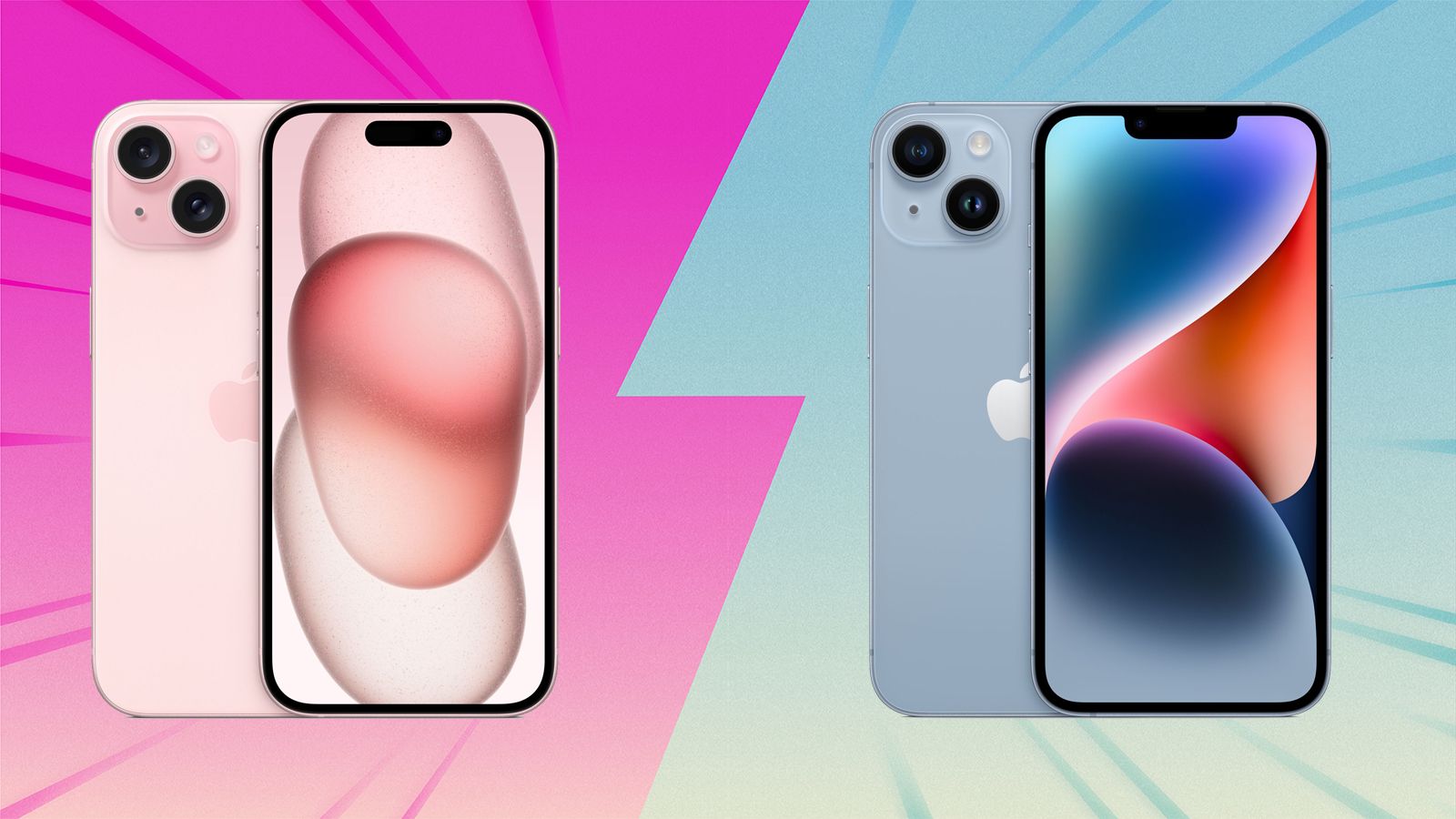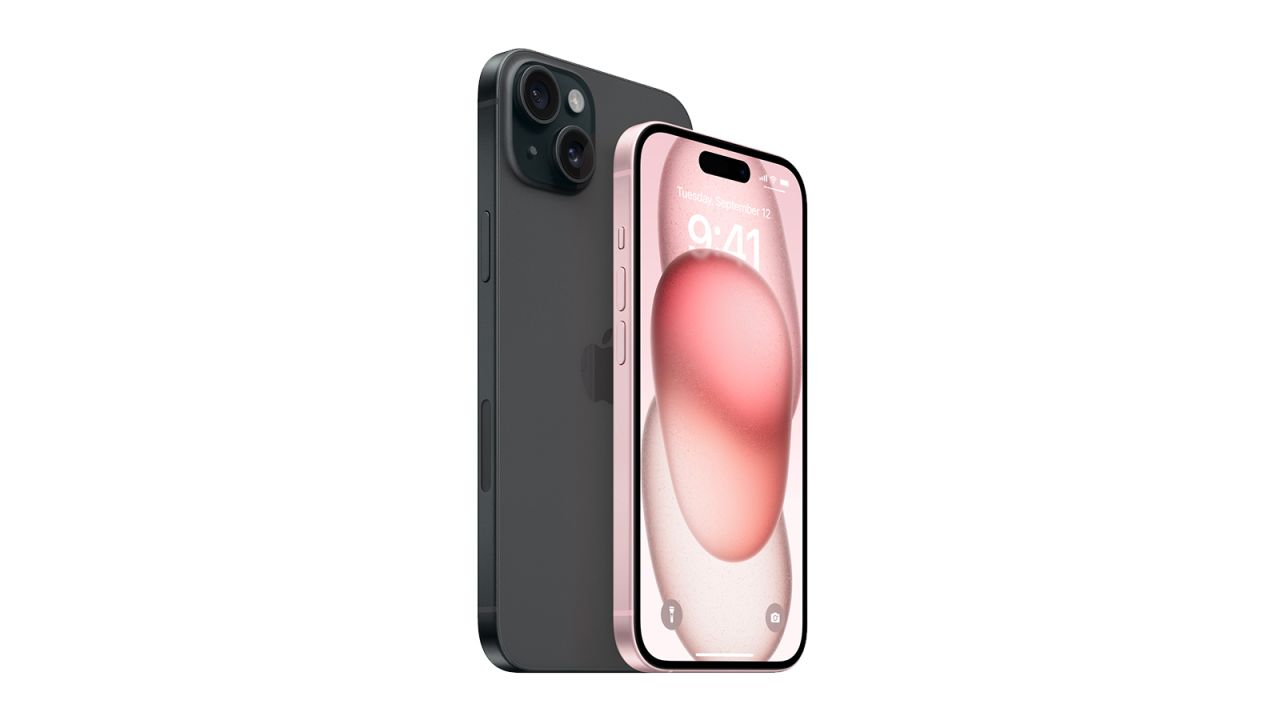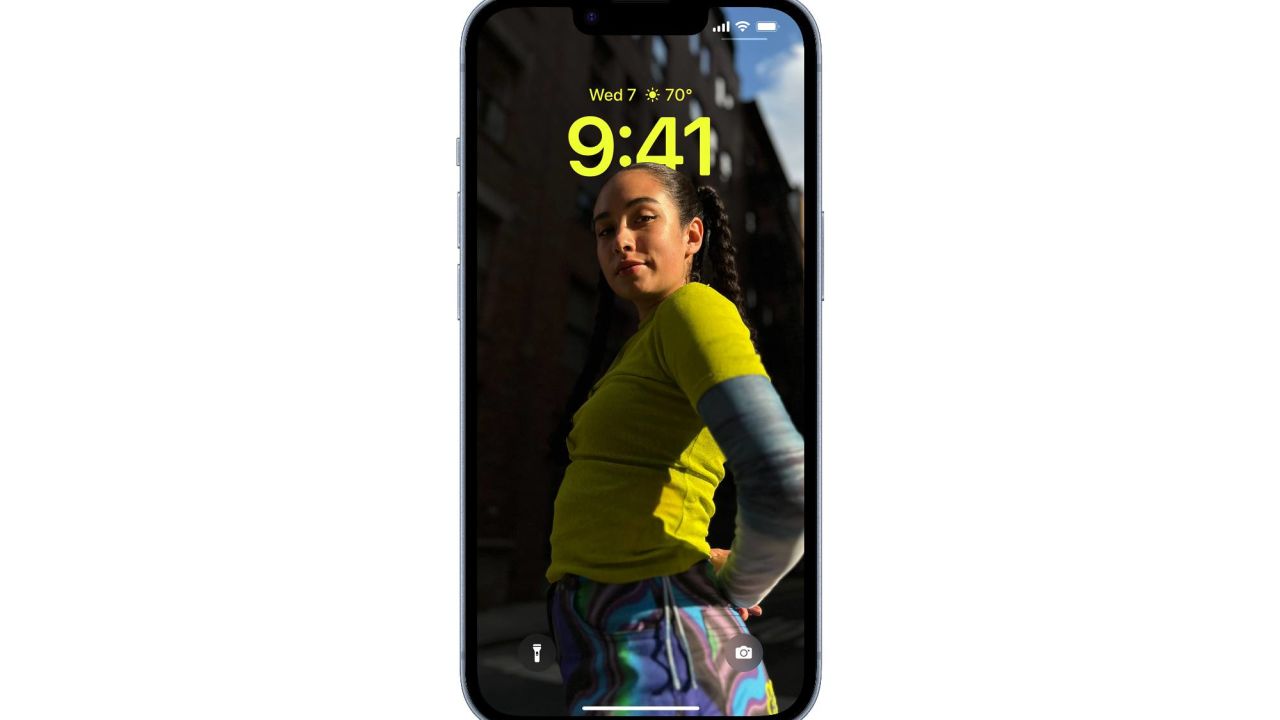When it first launched in the fall of 2023, Apple’s iPhone 15 was met by the same reaction many people have when new iPhones roll around: “It’s the same as the iPhone 14!” But whereas that was mostly true for the iPhone 14 compared to the 13, it’s not really the case in respect to the iPhone 15.
Surprisingly enough, the iPhone 15 is quite a meaningful upgrade over the iPhone 14. From its tweaked design and Dynamic Island to the new processor and USB-C port on the bottom, there’s a lot to talk about.
Of course, they aren’t wildly different iPhones, and they share the same fundamental experience. You may be asking yourself whether you should pick up a shiny new iPhone 15 or save a few bucks and swing for the iPhone 14. Let’s break down their differences and see which one is right for you.
Similar designs, different colors
The iPhone 15 and iPhone 14 look pretty similar to each other. They both come in 6.1-inch and 6.7-inch sizes with aluminum rails and glass backs, both carry IP68 ratings that make them water and dust resistant and are easy to mistake for one another at a quick glance.
That being said, there are some key differences that help the iPhone 15 not feel like yet another recycled version of the iPhone 12’s design, which is basically what the 14 was. The rear glass is now a single piece for a cleaner look, while the edges are slightly contoured to feel more comfortable in your hand. The bezels are also a bit thinner, which helps the iPhone 15 look more modern.

Apple also offers a different lineup of colors with the iPhone 15, which will probably take some getting used to because of how pale they are. You get pink, yellow, green, blue and black finishes, while the iPhone 14 is available in blue, purple, yellow, Midnight, Starlight and Product Red. The latter’s colors are a lot more vibrant and saturated, so if you want a yellow or blue iPhone that really pops, get the iPhone 14.
The Dynamic Island versus the notch
If you saw the Dynamic Island on the iPhone 14 Pro and thought to yourself, “I want this on a normal iPhone,” you’ll love the iPhone 15.
Apple brought the feature down to its baseline iPhone 15 and 15 Plus, replacing the notch. It’s a pill-shaped cutout that houses all of the sensors needed for Face ID to work, and around it is a special software layer that makes the cutout come to life. You can use the Dynamic Island to control music playback, track timers, follow sports scores using Live Activities and more. It’s also a great interface for phone calls, which expand from the top of the display when you receive one.
The iPhone 14, meanwhile, sticks with the more traditional notch to store all the Face ID sensors. It doesn’t come alive or anything, and it makes the 14 feel a bit dated. That being said, you may prefer the more ordinary nature of the notch, and if that’s your thing, the older iPhone is a no-brainer.
The iPhone 15’s cameras are a big improvement over the 14

If you want the best camera, the iPhone 15 is the clear winner.
Apple upgraded its main lens to a new 48-megapixel sensor, four times the megapixels of the iPhone 14’s primary lens. This allows for more accurate colors, improved performance at night and sharper images since you can shoot full-blown 48-megapixel photos (if you want, that is). There’s also the new 2x “optical” zoom option that lets you zoom in without losing quality, which is a very handy feature to have.
What’s more, you also get an improved 12-megapixel ultrawide camera with less lens flare and 4K video support in Cinematic mode. And thanks to the iPhone 15’s Focus and Depth Control features, all it takes is a quick tap to get that nice bokeh effect going when you have a pet or person prominently in frame — which saves you valuable seconds from having to swipe over to Portrait mode when you’ve found that perfect shot.
Meanwhile, the iPhone 14’s camera setup is a lot more basic. It has a 12-megapixel main camera and a 12-megapixel ultrawide, both of which were carried over from the iPhone 13, so they’re getting a little old. Photo and video quality is reliably good, though we saw some noticeable improvements when comparing shots across the iPhone 14 and iPhone 15. Apple’s newer iPhone provided more accurate colors when snapping night mode portraits and photos, and the ability to instantly activate portrait mode made a big difference in day to day use.
Both phones have 12-megapixel front cameras that more or less perform identically, so you’ll be getting solid selfie quality across both.
Faster performance, better battery life and longer software updates from the iPhone 15
Like the cameras, the performance of the iPhone 15 is better than the iPhone 14. Apple includes its A16 Bionic processor in its latest phone, which gives you faster everyday speed, better graphics performance while gaming and improved efficiency.
The A15 Bionic chip inside the iPhone 14 is no slouch, mind you. After debuting in 2021 in the iPhone 13, it’s still an absolute screamer, regularly benchmarking higher than most premium Android phones on the market. However, those chasing the best performance from their phones will want to opt for the iPhone 15.
|
Apple iPhone 15
|
Apple iPhone 14
|
|
|---|---|---|
| Geekbench 6 (single-core) | 6,510 |
5,502 |
| Geekbench 6 (multi-core) | 2,595 |
2,181 |
Our benchmark testing reveals some small but still noteworthy gains, with the iPhone 15 performing about 17% better than its predecessor on the Geekbench 6 multi-core test that gauges general performance chops. You likely won’t notice this difference in day-to-day use — both phones carry a 6-core CPU and 5-core GPU for smooth multitasking and gaming alike — but it means that the iPhone 15 is just a bit more future-proofed for the long run.
The newer chip also means you’ll get software updates for longer on the iPhone 15. It’s already well established that newer iPhones are supported longer by Apple than their older counterparts, and the same is true for its latest lineup. Whereas the iPhone 14 will likely max out at iOS 21 in a few years, the iPhone 15 could get iOS 22 or 23, based on Apple’s history of software updates. That’s obviously looking far into the future, but it’s important to keep in mind if you plan to use your phone for multiple years.
But while the iPhone 15 is undoubtedly faster than the iPhone 14, your mileage may vary when it comes to battery life. We noticed faster-than-usual battery drainage when first testing the iPhone 15, which could have been impacted by our own heavy-duty usage. That said, the newer iPhone generally held up against Apple’s own ratings of 20 hours of video playback for the iPhone 15 and 26 hours of playback for the iPhone 15 Plus, which are the same estimates it gives for their respective iPhone 14 models. During our testing of the iPhone 15 Plus, which included lots of gaming and photo-taking, we were ending most nights with 20% to 30% left in the tank.
It’s also worth noting that while both phones offer the same display sizes with nearly identical screen resolutions, the iPhone 15 has a higher peak brightness that makes it easier to use under harsh sunlight. The two phones more or less have parity when it comes to most key features, including Emergency SOS via satellite for getting help without cell service and Crash Detection for automatically alerting emergency services in the event of a car accident.
A fan of Lightning? Stick with the iPhone 14
One of the big new features of the iPhone 15 is the USB-C port. Apple has ditched Lightning in favor of the same connector you’ll find on iPads, MacBooks and a vast majority of third-party devices and accessories. Granted, it doesn’t do anything new — you get the same charging and data transfer speeds as Lightning — but at least you can use one cable to charge all of your devices.
Of course, many folks have invested for years in Lighting cables and accessories, and it might be hard to give all of that up because you want the shiny new iPhone. If that’s the case, get the iPhone 14. It retains the same old Lightning port you’ve come to know, and it’ll work with all of the stuff you’ve collected — without the need for Apple’s pricey new $29 USB-C to Lightning adapter.
The iPhone 14 is great if you’re on a budget

Despite the differences between the iPhone 15 and 14, they share a fundamental iPhone experience in which they’re both fast, have reliable cameras, will last you all day and offer all of the perks of iOS 17 (and Apple’s future software updates). Many folks might be after those fundamentals more than the latest model, especially those who might want to save a few bucks.
If that’s the case, the iPhone 14 is the correct move. With the iPhone 15 taking the $799 slot, Apple has discounted the 14 by $100, which makes its starting price $699. That’s a pretty nice deal on a phone with a modern design, great specs, good cameras and all-day battery life. Plus, you’ll likely find it cheaper with holiday discounts like Black Friday, assuming you can hold off for a little while.
Bottom line
The iPhone 15 has handily surpassed the iPhone 14 as our pick for best smartphone thanks to its superior design and significantly improved camera experience. That said, they share a lot of similarities, and are great choices no matter which one you buy.
If you want the latest and greatest technologies that Apple has to offer, the iPhone 15 will give that to you. You’ll get the Dynamic Island, an upgraded processor and a revamped camera system that’ll help everything from landscapes to portraits of your food look spectacular.
On the other hand, if you simply want a reliable smartphone that aces the fundamentals, go with the iPhone 14. It’s a little cheaper and you’ll get a lot of what the iPhone 15 will give you, just with an older chip, less impressive cameras and a notch at the top of the screen.























